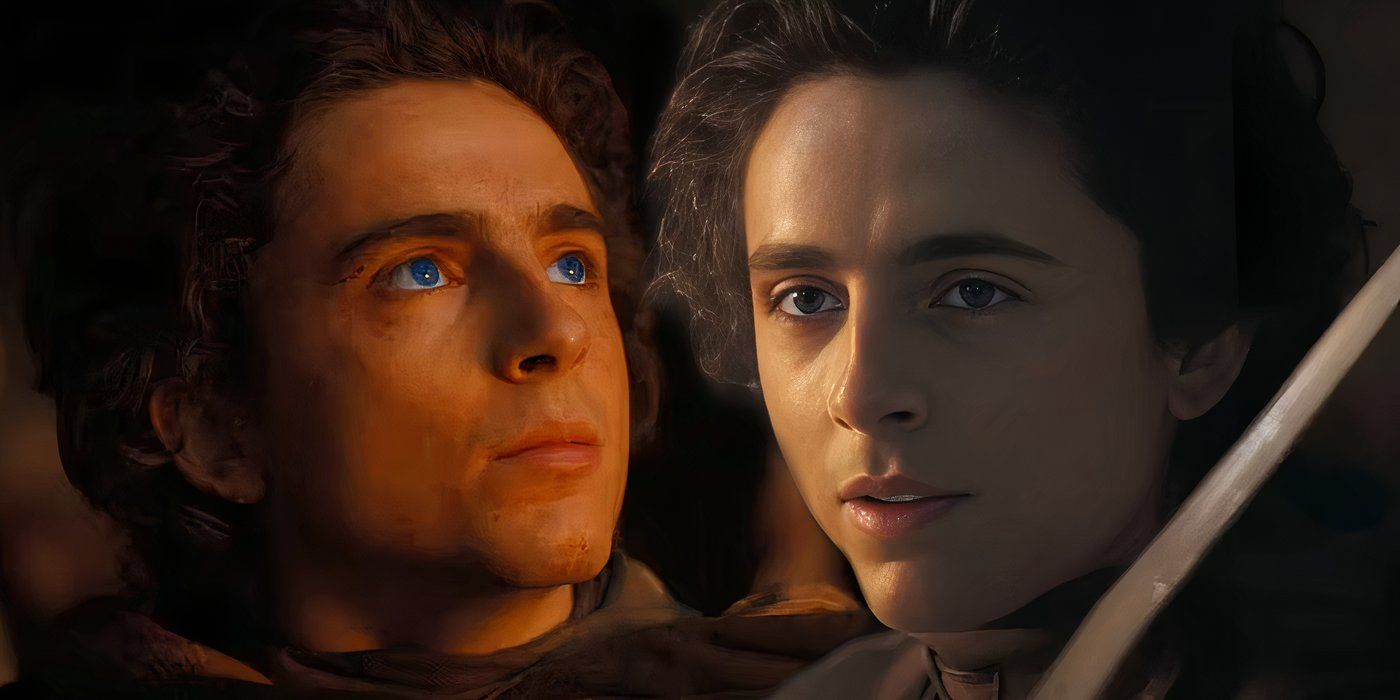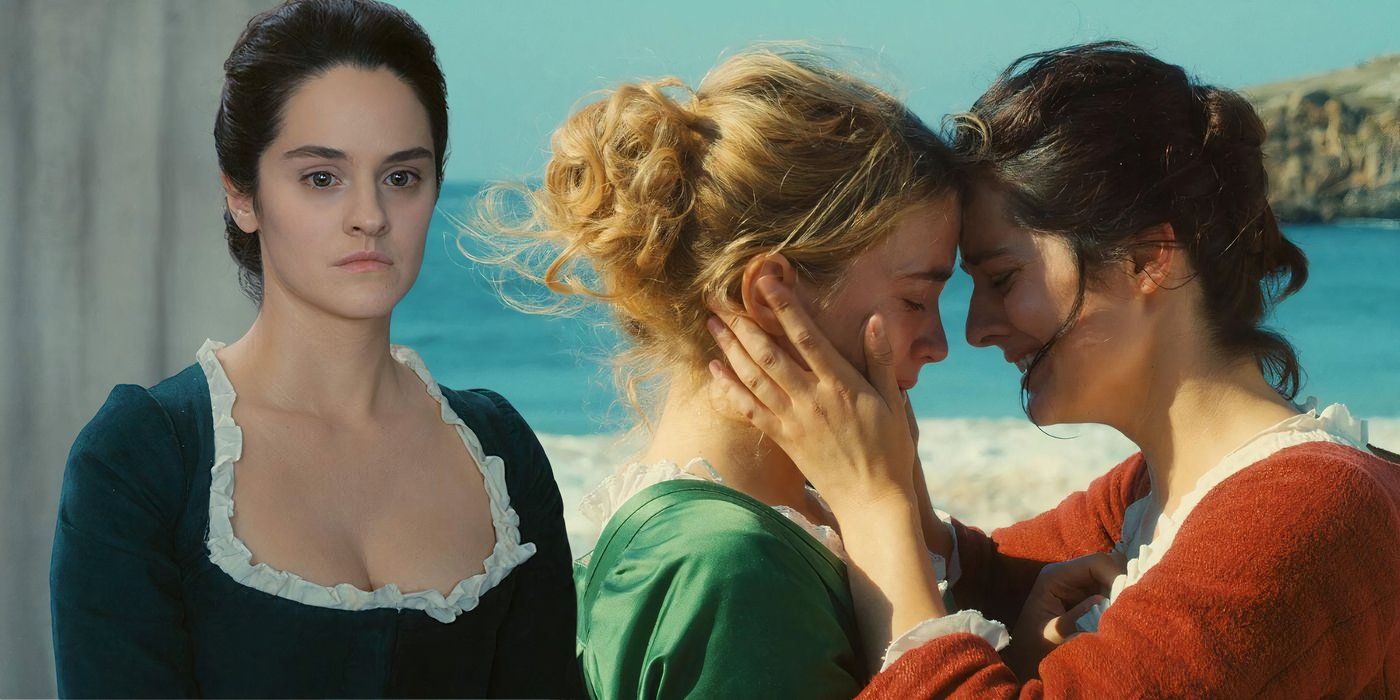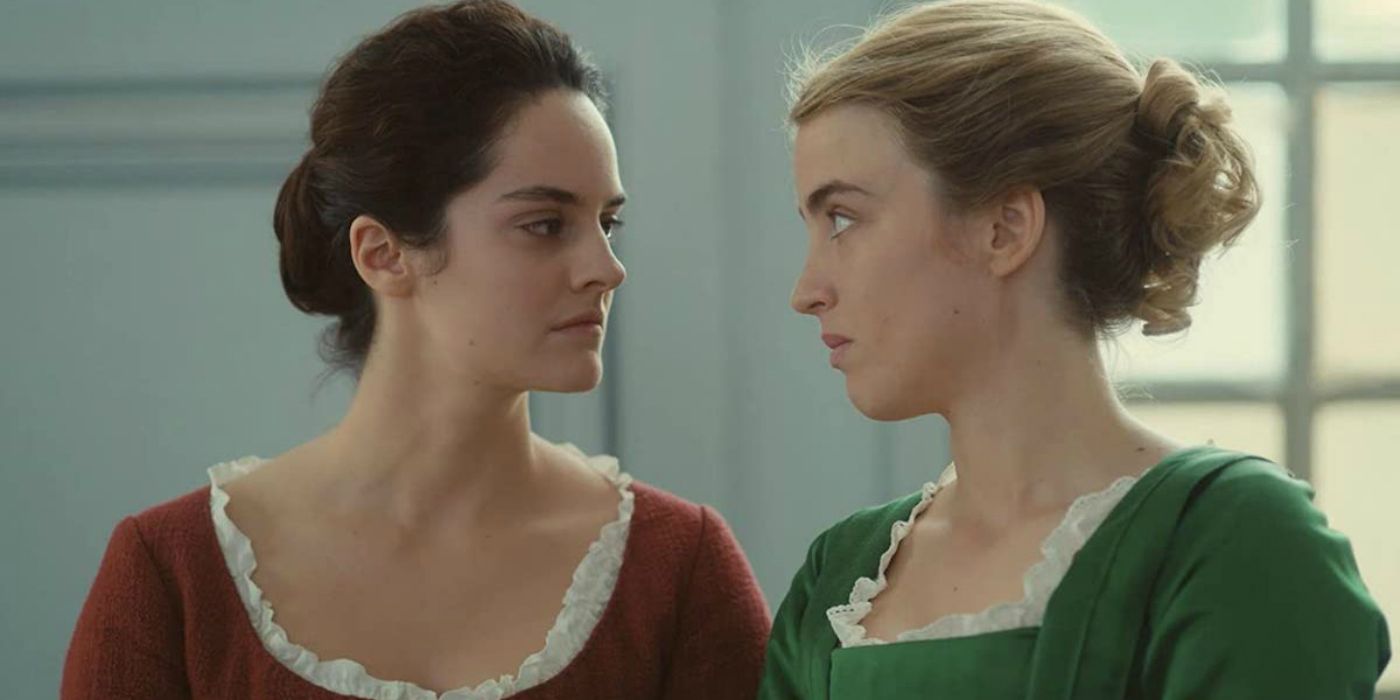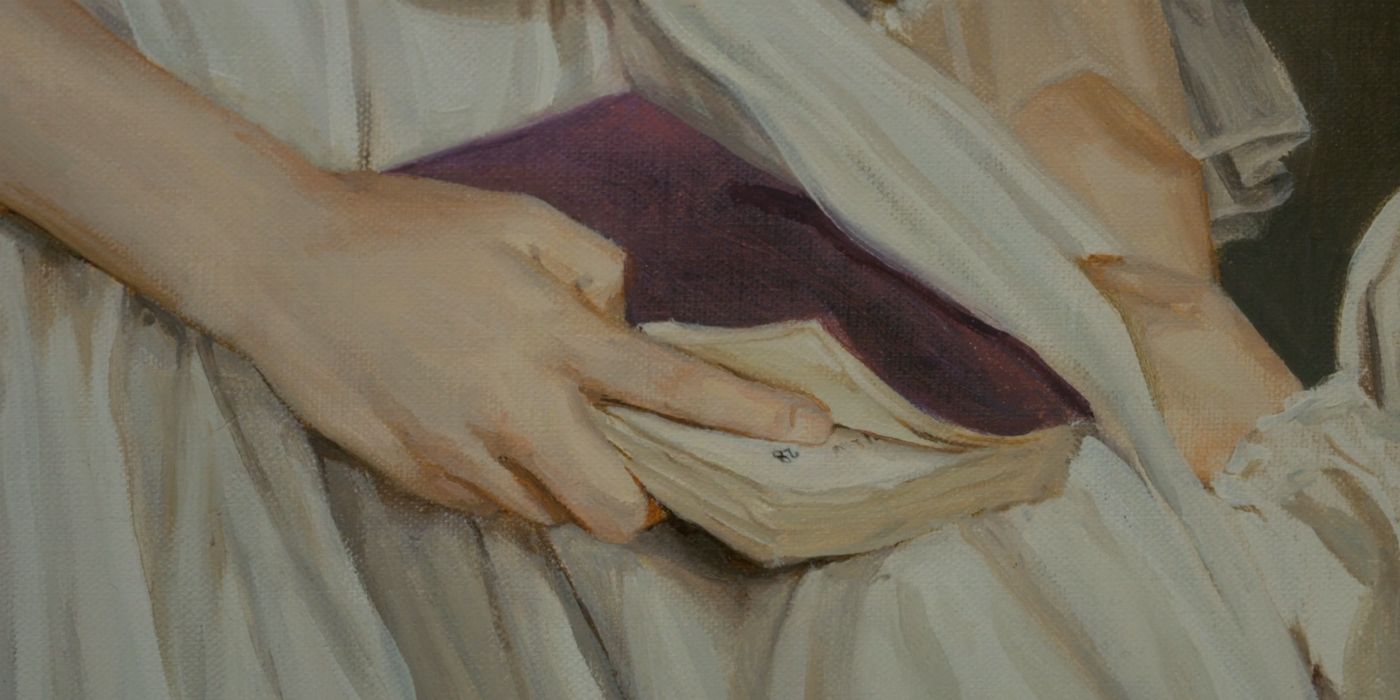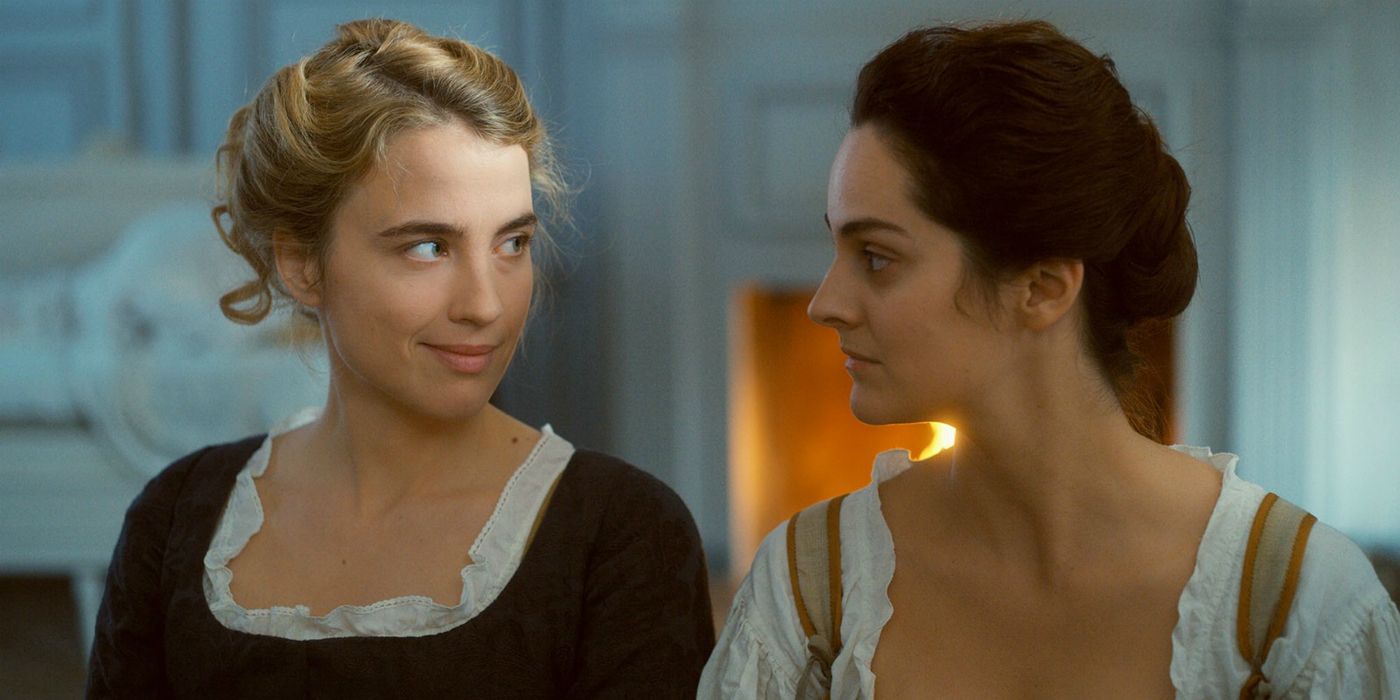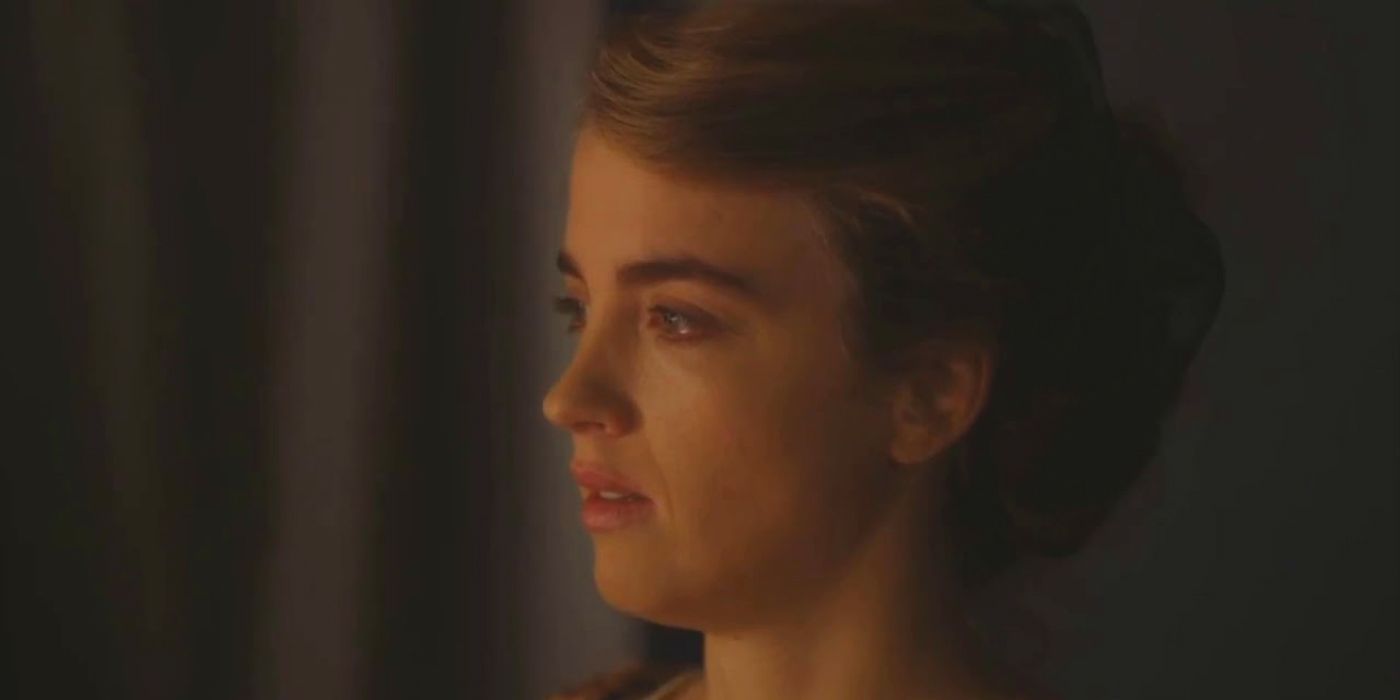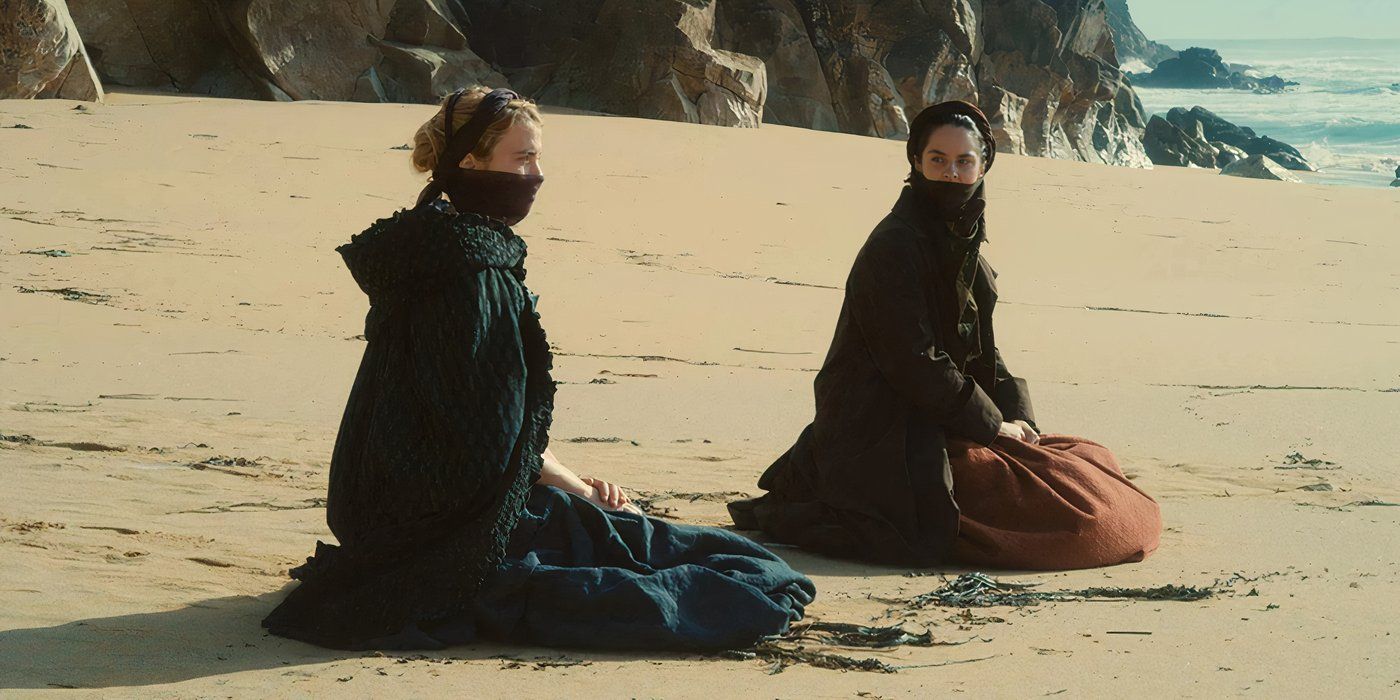Summary
- The iconic ending of "Portrait of a Lady on Fire" explores deep themes through poignant moments and layers of meaning.
- The film's connection to the Greek myth of Orpheus and Eurydice adds depth to Marianne and Héloïse's love story.
- The French language nuances, the number 28, and the ending music all add to the emotional impact of the film's conclusion.
Céline Sciamma's Portrait of a Lady on Fire has a great ending scene, with its final moments packed with deeper meaning and encompassing the movie's themes. Sciamma's fourth feature-length movie made its debut at the Cannes Film Festival in 2019, where it won Best Screenplay and the Queer Palm awards. It eventually made its wide release in the United States in February 2020. Like similar romance films, Portrait of a Lady on Fire tells the story of Marianne (Noémie Merlant) and Héloïse (Adèle Haenel); the former a painter, the latter the subject she's been brought in secretly to paint before an arranged marriage.
Throughout the film, which takes place in 18th Century Brittany, the pair become much more than artist and object, becoming friends, confidantes, and lovers. The film's framing device — opening with a slightly older Marianne running a painting class, and then flashing back to her time with Héloïse — means that audiences know they won't end up together. Marianne paints the portrait and leaves with Héloïse forced into the marriage. But the journey to that point means it's an ending that feels poignant and right and one with layers of meaning to unpack.

Portrait Of A Lady On Fire: 10 Behind The Scenes Details About Production & Filming
From the lighting and film decisions to the score and how the actors moved, fans of Portrait of a Lady on Fire will love these facts.
Orpheus & Eurydice In Portrait Of A Lady on Fire
The Greek Myth Behind The Story
Key to the story of Marianne and Héloïse is the Greek legend of Orpheus and Eurydice. Orpheus falls in love with the beautiful Eurydice but loses her after a snake bites her and she dies. He travels to the underworld and pleads his case to Hades to have her returned — Hades agrees, but on the condition that when they walk out of the caves, he must not look at her, or he'll lose her again, this time for good. Orpheus, unable to hear Eurydice's footsteps behind him, eventually gives in and turns around to see his lover, only to watch as she's whisked away from him forever, becoming nothing more than a memory to him.
This myth frames Marianne and Héloïse's love story
The common interpretation is that Orpheus chooses to look back. Héloïse offers her own: that Eurydice called for him to turn around, and only because of that did he do so. This myth frames Marianne and Héloïse's love story: one they know cannot last. It is better to end with the memory than nothing at all. Marianne casts herself as Orpheus in the painting she unveils at the end of Portrait of a Lady on Fire, which captures the moment Orpheus looks at Eurydice. it reflects her memory of that last glimpse of Héloïse as she left the house. Orpheus makes the "poet's choice" in turning around; Marianne makes the artist's choice.
Sciamma gives both women control in the tale and over their destinies.
This leads to Marianne's second act of turning around to face Héloïse, as she makes her way through the crowd to see her new portrait, almost as if called by an unheard voice. Again, this posits Héloïse as Eurydice, but one with full control over her actions, wanting Marianne to see her yet still out of reach. The story of Orpheus and Eurydice is typically seen as one of the male gaze; he looks upon her, to view her, putting his gaze above her existence. By turning the story into that of the female gaze, whichever point of view you see it from, Sciamma gives both women control in the tale and over their destinies.
The Hidden French Meaning In Portrait Of A Lady on Fire's Ending
The Intimate Feelings Are Stronger In The French Language Version
As pointed out by Vox, Portrait of a Lady on Fire contains another extra meaning for those who can follow along with the movie's native French language, rather than relying on subtitles. When Marianne and Héloïse speak with one another, they use "vous," which is the formal version of "you" in French. At the beginning of their relationship, this is proper: Marianne has been hired by the head of the household, and the women don't know each other, so it makes sense to have a level of formality.
However, Marianne and Héloïse continue to use "vous" around each other, even after they've started to bond, even after it becomes clear they've developed feelings, slept together, and Marianne has painted her. Their relationship changes to become more intimate, but their language doesn't. That is, until the end — the final interaction between Marianne and Héloïse. When Marianne is finally set to leave the house, Héloïse runs down the stairs after her, in her white wedding dress, and says: "Retourne-toi."
It makes their feelings for each other all the clearer
Not only is this her Eurydice moment, but perhaps even more notably, she speaks informally here. It makes their feelings for each other all the clearer and, even though it's unbeknownst to many viewers, all the more impactful. Héloïse opens herself up fully to Marianne, admitting her feelings in their final moment together. If all she can leave Marianne with is a memory, then it's going to be an extremely powerful, loving one.
The Number 28 In Heloise's Portrait
This Is Where Marianne Painted A Special Gift For Héloïse
When Marianne does make her way through the crowd to face the portrait of Héloïse in Portrait of a Lady on Fire's ending, what stands out isn't the way Héloïse is painted, nor the golden-haired child - almost certainly her daughter - by her side. Though both could be enough to make Marianne's heart either swell or burst, what matters most is the page number peeking out of the book in her lap: number 28, the same page that Marianne drew herself on in Héloïse's copy of the Orpheus and Eurydice story.
Héloïse including the number 28 here shows Marianne the perfect moment between them.
This isn't just Héloïse's way of telling Marianne she remembers her too — it's recalling a specific vision: like how Héloïse gives Marianne one last perfect memory by using informal French and allowing her to see her in white, just as Marianne had visions of. Héloïse including the number 28 shows Marianne the perfect moment between them. She is choosing to hold in her memory, and showing that no matter the artist, Marianne is the one who truly sees her. Héloïse's painting calls out to Marianne, their shared bond physically broken but immortalized on the canvas as it is in their memories and hearts.
Why Portrait Of A Lady On Fire's Final Musical Choice Is So Important
The Song At The End Explains It All
While Portrait of a Lady on Fire focuses on art, it's restrained concerning music. There are few musical moments throughout the film, but that gives the film's ending scene more impact. In a sequence of five minutes, Marianne sees Héloïse for the second time since leaving her home, this time at a concert. Marianne looks across the hall and sees Héloïse on the opposite side, though she goes unseen. Héloïse is engrossed in the music, becoming increasingly emotional. The music playing is from "Summer" from Vivaldi's Four Seasons, the same music Marianne played earlier in Portrait of a Lady on Fire.
Is the invading memory of Marianne the storm, or is it the summer's day, being crushed by the reality of life without her?
Hearing an orchestra was something that Héloïse longed to hear. In one sense, Héloïse has something that she wants; she's happy. But hearing the music - specifically, this music - calls to mind the memory of what she lost to gain it; namely, Marianne. It's fitting that the piece itself is about a perfect summer's day being interrupted by a storm. It'd also be fair to question which is which in Héloïse's case: is the invading memory of Marianne the storm, or is it the summer's day, being crushed by the reality of life without her?
Marianne is once again cast into the role of Orpheus, left with nothing but being able to gaze upon her love. As the music swells and the camera zooms in on Héloïse's face, Portrait of a Lady on Fire returns to the act of gazing. For anyone else, Héloïse may look like any other concert-goer. But through Marianne's eyes, the viewer sees Héloïse as Marianne does, every emotion and expression dancing upon her face, pain and joy, sorrow and smiles complementing and contradicting one another. It is the way only someone who truly loves someone can see, which is all Marianne can do now too; to look, and remember, without regret.
Portrait Of A Lady On Fire's Ending's Real Meaning
An Emotionally Packed Conclusion Of All Of Its Themes
The stunning ending of Portrait of a Lady on Fire packs a real emotional punch, as all the viewer can do is sit and stare in silence, watching Héloïse watch the orchestra, all through the eyes of Marianne. That choice alone is telling in how it frames the story, which itself becomes, in part, about the female gaze (note the general lack of men in the story at all). Through this gaze, audiences experience the beauty, passion, romance, love, and heartache that Marianne and Héloïse see in one another, which comes to a crashing (and crushing) crescendo in those final minutes.
These closing moments highlight the power of memory and art; how both can be interpreted differently, that neither is necessarily the truth of whom the person is (or was), and it can't fully capture what they meant to you. And yet both possess an incredible power too: to take those moments of romance and love, but also of pain and loss, and give them an infinite lifespan. Portrait of a Lady on Fire's ending brings home all its themes - the story of Orpheus & Eurydice, the female gaze, the strength of art, and the ability to see another person - and perfectly caps them all off.
What The Filmmaker Said About Portrait Of A Lady On Fire's Ending
She Knew The Movie Couldn't Have A Happy Ending
Céline Sciamma made an important decision concerning the Portrait of a Lady on Fire ending. The director knew from the start the movie couldn't have a happy ending. It had to have an honest and possibly brutal ending, but she also wanted to make sure that the ending told the story of two women who loved each other so much that they were willing to let each other go, and only keep the memories. It wasn't a love story with a happy ending, but the memories needed to remain happy for both women. The "happy ending" was never the point (via The Independent).
"I wanted to question what a happy ending is. We have the romantic-comedy philosophy – a frozen image of two people being together – and we also have the tragic ending. And I wanted neither. Why do we believe that eternal possession of somebody means a happy ending? Love educates us about art. Art consoles us from lost love. Our great loves are a condition of our future love. The film is the memory of a love story; it’s sad but also full of hope."
Marianne and Héloïse's relationship ended because it had to end. The women loved each other and felt passion, but they needed to go their separate ways. As Sciamma makes clear with her ending, that is okay. This movie does not have a tragic ending as both women went on to live lives that might have made them happy. But, at the same time, Portrait of a Lady on Fire shows that they can also keep those memories of the past, and that will never be taken away from them, even if it was just a flicker in time.
Portrait of a Lady on Fire
- Director
- Céline Sciamma
- Release Date
- September 18, 2019
- Main Genre
- Romance



